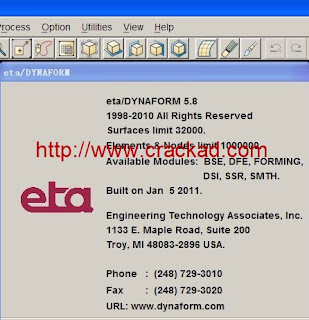
As tough market competition demands faster cycle times, lower software costs and lower user qualification thresholds, Engineering Technology Associates, Inc. (ETA) has developed a new tool, the INC Solver, to address these needs. The solver is included in DYNAFORM 5.7.3, released today.
To expaBody Side Simulationnd the usability of DYNAFORM’s Die Face Engineering (DFE) module, INC is a finite element analysis (FEA) solver designed for sheet metal forming simulations. It provides a value solution for customers who are looking for rapid die design and a virtual tryout tool that generates quick results, is easy to master, but does not sacrifice accuracy.
Tagged at “Best Practice” within INC, the solution pre-populates a set of default parameters produce accurate results. This feature provides a guided
process for inexperienced users; while more advanced users can adjust these default parameters to their preferences. Also, INC Solver requires very few manipulations overall to simulate a typical 3-piece draw analysis.
For die face design virtual tryout, the solver offers capabilities for simulating gravity-loading, binder-wrap, crash-form, single-action and double-action draw die, as well as springback prediction and lancing operations. INC solver supports non-conforming CAD surfaces and its fusion-fission approach handles mesh adaptivity effectively.
INC takes advantage of Intel’s latest multiple-core computing platform to make computing very affordable. For example, a 4-Core system costing under $1500 can process the most complicated large bodyside panel simulation in less than 50 minutes.
In addition to DFE, DYNAFORM includes three other modules, including DYNAFORM includes three other modules, including Blank Size Engineering (BSE), LS-DYNA-based Formability Simulation (FS) and LS-DYNA-based Die System Analysis (DSA). DYNAFORM is a complete die system simulation solution which allows organizations to bypass soft tooling, reducing overall tryout time, lowering costs, increasing productivity and providing confidence in die system design.
 Software training,tutorials,download,torrent
Software training,tutorials,download,torrent